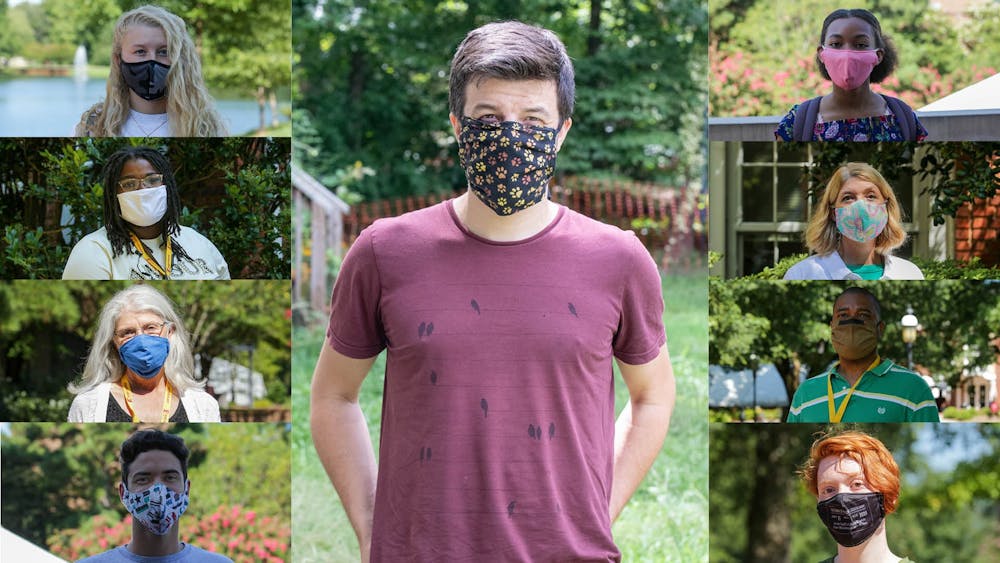With a cellphone, a cardboard box, a lens, some masks, a device that harnesses the power of a laser and a laser, it is possible to test how good a mask is at stopping water droplets from someone’s mouth, all for less than $200. A few weeks ago, a team of researchers at Duke University did exactly that.
David Grass, a research assistant at Duke University, is one of seven researchers who were involved and who created this device. The group’s goal was to create a low-cost way to test the effectiveness of different face coverings.
Grass said the experiment came about after the organization Cover Durham — a group that distributes free masks — was making a decision on an order of face coverings, but was unsure if they were any good. The group asked around at Duke, looking for a quick way to test the effectiveness of the mask, which sparked the idea for this experiment.
At the end of the analysis, the results showed the N95 mask was the most effective face covering at stopping water droplets, while neck gaiters were the least effective. In some cases, a neck gaiter allowed more droplets to reach the subject than the lack of a mask.
According to Grass, that does not necessarily mean that neck gaiters are the worst style of mask, as they tested 14 different face coverings, but none in-depth.
“You would need to test 20 or 50 people and many more neck gaiters to really say ‘okay, now we understand neck gaiters,’” Grass said.
However, some media organizations took the results as neck gaiters being the worst mask.
“What was a bit sad is that most of the media reports kind of didn’t get it right. I think most of the headlines I read are like, ‘Duke researchers found out the best and the worst masks’ or variations of this,” Grass said. “Which is not the case, so I think this is just a misunderstanding.”
Some of the headlines that popped up are: “Researchers created a test to determine which masks are the least effective” from CNN, “The 14 face masks tested in Duke University study, ranked from best to worst” from the New York Post and “Wearing a neck gaiter may be worse than no mask at all, researchers find” from the Washington Post.
According to Grass, finding out what masks most and least efficiently blocked water droplets was not the purpose of the experiment.
“We wanted to show it that with very simple methods and very cheap equipment ... you can build such an experiment to test masks yourself,” Grass said. “This was the idea, and then in order to demonstrate the platform, we tested 14 masks, with a single speaker, but this is of course not at all enough to make a recommendation. I mean, you would need to do a full blown clinical trial.”
Grass, who originally is from Germany, hopes this study changes people’s perspective on masks, as he thinks more people wearing masks in Germany helped them keep their coronavirus cases lower.
“I have the personal impression that in Germany people wore masks more and here, it was more like a political discussion if masks were actually any good or not. I really hope that now due to the media attention this kind of convinces more people to wear masks,” Grass said. “Although this is not the point of the paper, I just think it would just be good.”
Elon University’s Ready and Resilient plan lays out in detail when students are required to wear face coverings. The only recommendation they give as to what type of mask students should be wearing is one without exhalation valves or vents.
The Center for Disease Control and Prevention gives the same recommendation and also recommends that people do not wear face shields in replacement of masks.


